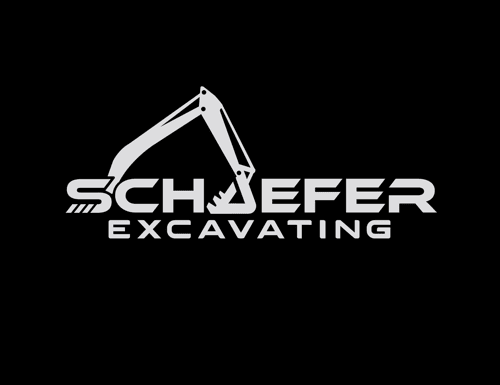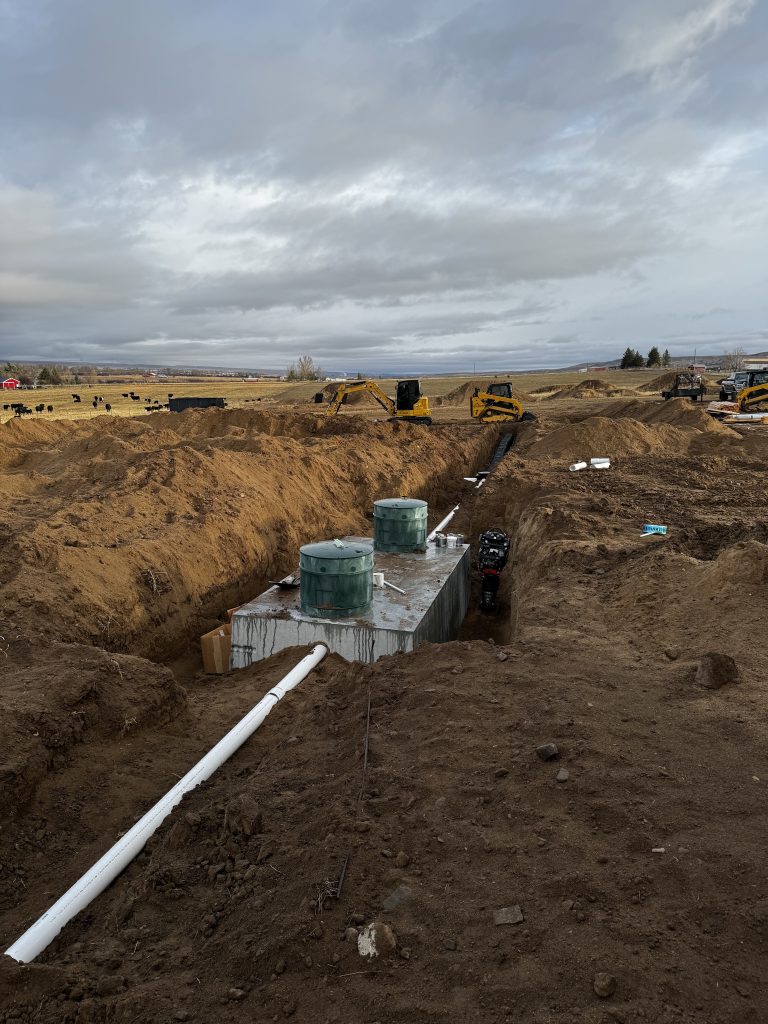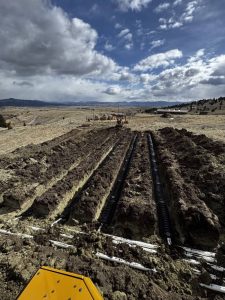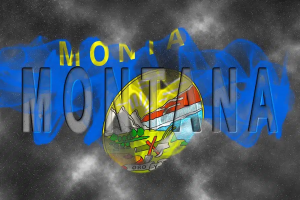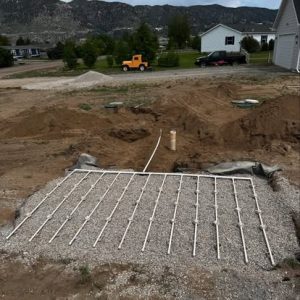If your property isn’t connected to a municipal sewer system, then installing a septic tank is essential for managing wastewater safely and legally. But a septic system isn’t just something you bury in the ground—it requires careful planning, precise installation, and a full understanding of local soil conditions, regulations, and long-term functionality.
At Schaefer Excavating, we specialize in septic tank installation across Butte, Helena, Great Falls, and Bozeman, MT. Whether you’re building a new home or replacing an outdated system, we’re here to help you understand the process, avoid common pitfalls, and install a system that will last for decades.
Why Septic Tank Installation Matters
Septic tanks are responsible for safely treating and disposing of wastewater from your home or business. A poorly installed or undersized system can result in:
Sewage backups
Contamination of groundwater or wells
Costly repairs or replacements
Fines or failed inspections
By working with a licensed local expert, you ensure your system is designed for Montana’s unique terrain and built to meet all health and environmental standards.
Our Septic Tank Installation Services Include:
On-site soil evaluation and percolation testing
Permit coordination with local health departments
Excavation, trenching, and site preparation
Septic tank and drain field installation
Backfill, grading, and erosion control
System testing and inspection coordination
Septic Challenges by Location
Each of the four Montana cities we serve comes with different considerations:
Butte
Rocky terrain and mining legacy areas often require custom excavation and deeper trenching.
Hardpan soils and slope require careful drain field design.
Helena
Varying soil profiles in the valley may include clay or sandy loam, which impact absorption rates.
High groundwater in some areas necessitates mound systems or alternative solutions.
Great Falls
Glacial soils and cold winters make depth and insulation critical.
Drainage design must account for spring runoff and snowmelt.
Bozeman
Growing demand and regulations around environmental impact require accurate permitting and sizing.
New builds must comply with city-county septic design standards.
The Septic Tank Installation Process
1. Site Evaluation & Soil Testing
Before digging begins, we conduct a percolation (perc) test and soil profile to determine what kind of system your site can support. Soil type, water table depth, and lot slope are key factors.
2. Design & Permitting
We help you obtain the required permits and design a system that complies with local codes. Whether it’s a standard gravity-fed system or an engineered solution, we’ll tailor it to your property.
3. Excavation & Trenching
We dig to the precise specifications for tank placement and drain field layout. Our experience with Montana terrain ensures minimal disruption and safe installation.
4. Tank & Drain Field Installation
We install high-quality tanks sized for your household, followed by pipe distribution and gravel-filled trenches for your drain field. In clay or shallow soil, we may recommend chambers, sand filters, or mound systems.
5. Backfill & Grading
We backfill carefully, then grade and compact the soil to support future landscaping and drainage away from your home.
6. Inspection & Final Approval
We coordinate with inspectors to certify your system. You’ll receive as-builts and documentation for your records.
Septic Tank Installation FAQs
Q: How long does septic tank installation take?
A: Typically 3–7 days, depending on site conditions and inspection timing.
Q: Do I need a permit for septic installation?
A: Yes. All Montana counties require a permit. We handle this for you.
Q: How much does a new septic system cost?
A: Costs range from $8,000–$15,000+ depending on tank size, soil type, and system complexity.
Q: How often should I pump my tank?
A: Every 3–5 years for a typical household, though this varies by use and tank size.
What Makes Our Work Different?
We believe in doing things right the first time. That means:
Precise grading and compaction to avoid settling
Drainage solutions to prevent water pooling or field flooding
Custom systems for every property—no one-size-fits-all jobs
Responsive communication before, during, and after installation
From remote rural lots to suburban developments, we’ve helped Montana families and businesses get reliable, long-lasting septic solutions.
Final Thoughts
When it comes to your home or business, you can’t afford to cut corners on something as important as wastewater treatment. A well-installed septic tank system will work quietly for years—but a bad install can cause years of headaches.
If you’re in Butte, Helena, Great Falls, or Bozeman, trust Schaefer Excavating for reliable, code-compliant septic installation with local expertise. We don’t just install systems—we build solutions for the long term.
🌐 Visit https://schaeferexcavatingmt.com
📍 Serving Butte, Helena, Great Falls & Bozeman, Montana
